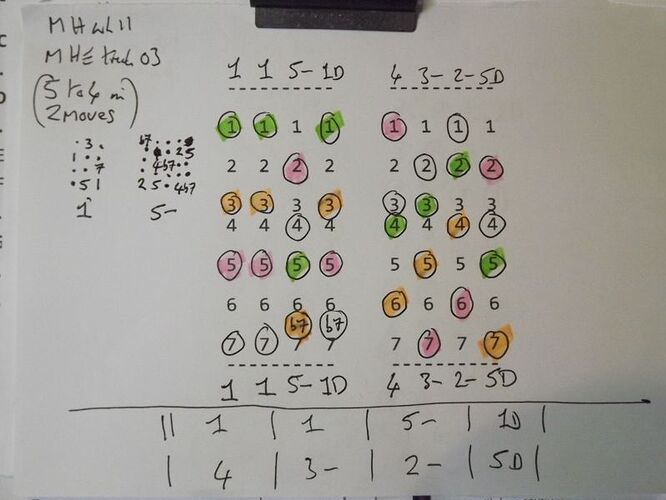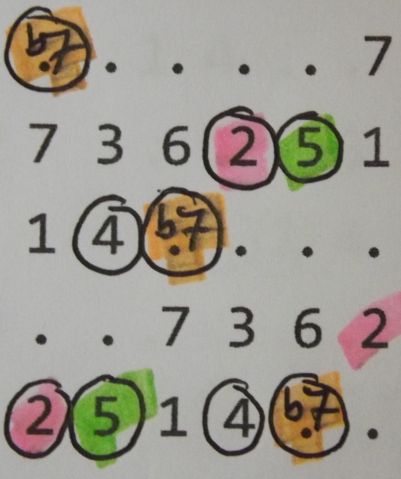A week or so ago I had an ‘inspiration’ about the Melody Path diagrams and tweaked my template.
My original template, which I’ve been using for a while, is based on the diagrams used in the IFR book and courses. It has 4 blocks (2 pairs) each having 4 columns of the tonal map 1 to 7. I usually print to A4, then cut each sheet into 2x A5. I can either use a sheet for 2x 4 chord progressions, or use a pair of blocks together for a longer progression.
Pretty much the only variation on the usual IFR illustrations is that I like to space the numbers out in the manner of the tone & semi tone relationships, hence line breaks between most, but not between 3 & 4.
I also use ‘fretboard’ templates to aid mapping out ideas, environments, etc., in terms of a fretboard. I’ve written about this before (I’d post PDFs, for the fretboard & melody path template, but it doesn’t seem to be a ‘permitted type’ at present).
Doing an exercise as part of @Jelske 's Mixed Harmony improv course got me thinking about a possible variation on the Melody Paths template.
An obvious difference between my fretboard ‘model’ and the usual templates is the direction in which the numbers run, i.e. ‘classic’ melody path diagrams have highest note at the top and the fretboard mode (& a real fretboard) have the lowest note at the top.
Not a major issue, but it is a difference, so I built an alternative Melody Path template as an experiment. Essentially just the same as I’ve used before, but with 1 to 7 top to bottom rather than 7 to 1.
Here’s the filled copy of my new version for a
|| 1 | 1 | 5- | 1D |
| 4 | 3- | 2- | 5D ||
progression.
The colouring is an idea I’m trying out to highlight the root, 3rd & 5th (& in a sense the 7th, since it’s the only chord tone not coloured in).
To right you can see that sometimes I also sketch in simple fretboard layout patterns, but those are more for while I’m thinking about the fingerings in advance.
I’ve only had time to use it for a couple of exercises, but I think I’m going to like (& prefer) it. I immediately felt more ‘at home’ with the reversed sequence. Your preferences may vary, but I thought I’d share.


